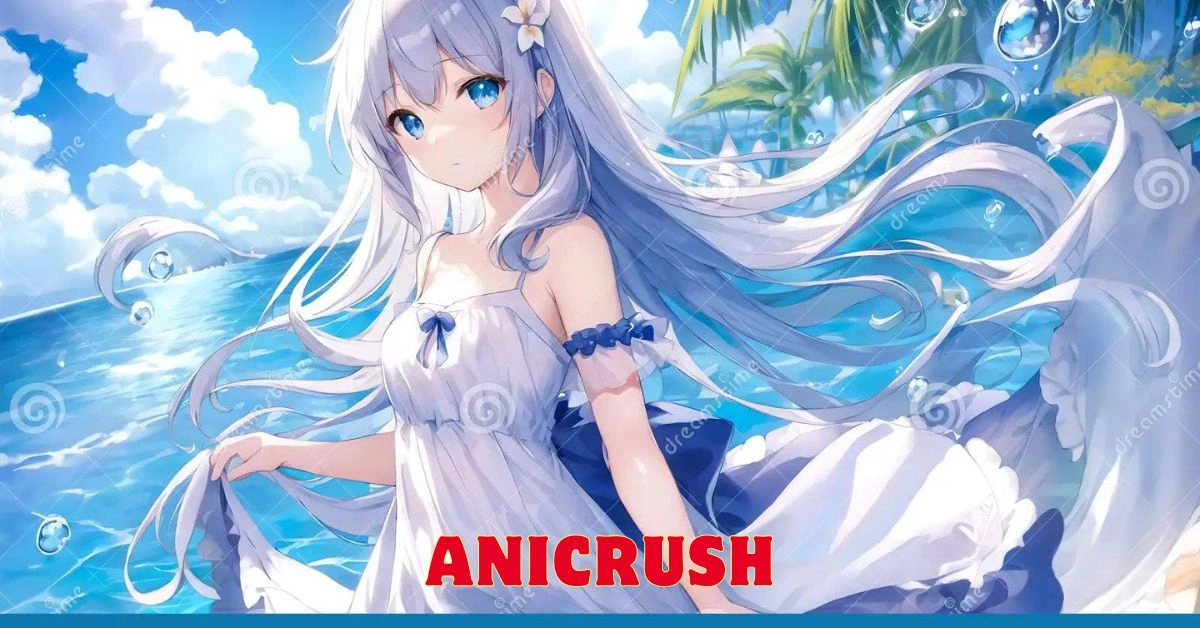In recent years, the world of anime has grown exponentially in terms of global reach and popularity. One notable catalyst in this rising wave of enthusiasm is the term “Anicrush,” which refers to the passionate obsession fans develop for anime characters, often accompanied by emotional investment and admiration. Anicrush goes beyond mere fandom, representing a deeply personal connection between individuals and the anime universe. In this essay, we will explore the origins of Anicrush, its implications for the anime community, and its broader impact on pop culture.
Origins of Anicrush: A Cultural Shift in Fandom
The term “Anicrush” derives from the combination of “anime” and “crush,” and it represents the intense attachment viewers develop toward anime characters. Anime has long been a part of Japanese culture, dating back to the early 20th century. However, in recent decades, it has transcended borders, becoming a global cultural movement. In the early 2000s, with the rise of internet platforms like forums, fan pages, and social media, fans began to articulate their emotional connections with fictional characters more openly. This led to the coining of terms like “waifu” and “husbando” to refer to anime characters that fans see as idealized partners.
Anicrush, however, is a broader concept, encompassing not just romantic admiration but also a sense of aspiration, inspiration, and escapism. While some fans may idolize characters for their physical appearance, others may connect deeply with their struggles, personalities, or values. For example, characters like Naruto Uzumaki from Naruto or Mikasa Ackerman from Attack on Titan resonate with fans because of their determination, loyalty, and courage.
The rise of Anicrush is also tied to the evolution of anime storytelling. Anime has diversified over the years, moving from traditional genres like shonen and shojo to more complex narratives involving psychological depth, moral dilemmas, and existential themes. As characters become more multifaceted, the emotional investment fans make in them deepens, leading to a stronger form of admiration—hence the phenomenon of Anicrush.
The Psychology Behind Anicrush: Why Do People Fall for Fictional Characters?
At the heart of the Anicrush phenomenon lies human psychology. There are several reasons why fans might develop strong emotional connections with anime characters. First, anime often depicts characters in highly idealized forms, both in terms of physical appearance and personality traits. Characters are designed to be visually appealing, with exaggerated features such as large eyes, expressive faces, and distinctive outfits. These aesthetic choices play a significant role in attracting viewers.
Moreover, anime often presents characters in a way that emphasizes their emotional and psychological depth. Viewers witness characters’ personal growth, their trials, and their triumphs, making them relatable. This relatability fosters a sense of attachment, as fans project their feelings and experiences onto these fictional personas.
Another psychological factor contributing to Anicrush is the concept of parasocial relationships. Parasocial relationships are one-sided bonds people form with media figures, including fictional characters, in which the person feels a connection despite no reciprocal interaction. For example, someone may feel as though they understand a character deeply, empathizing with their hardships and rooting for their success, even though the character is not real. These parasocial connections allow fans to experience emotional intimacy in a safe and controlled environment, which can be comforting.
Finally, the escapist nature of anime plays a crucial role. In a fast-paced and often stressful world, anime offers an escape into fantastical universes filled with adventure, romance, and possibility. Fans may form Anicrushes as a way to immerse themselves in these alternate realities, where they can find solace, inspiration, or excitement.
The Role of Social Media in Amplifying Anicrush
Social media has had a profound impact on the spread of Anicrush, enabling fans to share their affection for characters on a global scale. Platforms like Twitter, Instagram, Reddit, and TikTok are filled with fan art, memes, cosplays, and discussions centered around beloved anime characters. Hashtags like #WaifuWednesday or #AnimeCrush frequently trend, showcasing the wide range of characters that fans adore.
Moreover, fan communities have sprung up around specific shows and characters, offering a space for fans to share their Anicrush experiences. These communities act as echo chambers, where people can reinforce each other’s feelings and create a sense of belonging. Fans not only bond over their shared admiration but also engage in creative activities such as writing fanfiction, producing fan art, or crafting elaborate cosplays. This level of creative output elevates Anicrush from a simple crush to a form of cultural production.
Interestingly, social media has also blurred the lines between reality and fiction. Some fans go as far as creating virtual relationships with their Anicrushes by participating in virtual dating simulators or using augmented reality apps to interact with anime characters. This further cements the emotional investment fans have in these fictional personas.
Anicrush and the Globalization of Anime
One of the most significant developments in anime culture is its globalization. No longer confined to Japan, anime has become a worldwide phenomenon, and the Anicrush trend has followed suit. Streaming platforms like Crunchyroll, Netflix, and Funimation have made anime more accessible than ever, introducing millions of new viewers to a wide range of genres and characters.
This increased accessibility has also diversified the demographic of anime fans. While anime was once stereotypically associated with young male audiences, it now attracts viewers of all ages, genders, and backgrounds. As a result, the types of characters people develop Anicrushes on have expanded. Some fans might gravitate towards strong female characters like Saber from Fate/stay night, while others might prefer quirky personalities like Luffy from One Piece or introspective characters like Rei Ayanami from Neon Genesis Evangelion.
Moreover, the Anicrush phenomenon has contributed to anime’s influence on global fashion, music, and even gaming. For instance, many fans draw inspiration from anime characters when designing their own fashion choices or even adopting certain personality traits they admire. This crossover between anime and real-life culture highlights the significant role that Anicrushes play in shaping global pop culture.
The Impact of Anicrush on the Anime Industry
Anicrush has not only influenced fans but has also had a tangible impact on the anime industry itself. Anime studios and creators have recognized the value of fostering emotional connections between fans and characters. As a result, they increasingly design characters with Anicrush potential in mind, focusing on visually appealing traits, complex personalities, and compelling backstories.
Merchandising is another area where Anicrush plays a crucial role. Fans are eager to purchase figures, posters, clothing, and other memorabilia related to their favorite characters. Limited-edition merchandise featuring popular characters often sells out quickly, contributing to the financial success of anime franchises. In some cases, entire marketing campaigns are built around characters that fans have developed Anicrushes on.
Additionally, anime conventions have become popular events where fans can meet voice actors, participate in cosplay competitions, and attend panels discussing character development. These conventions serve as real-world spaces where the virtual emotions surrounding Anicrush can be celebrated and shared.
The Ethical Implications of Anicrush: Navigating Reality and Fantasy
While the Anicrush phenomenon is largely a positive expression of fandom, it also raises ethical questions. Some critics argue that intense emotional investment in fictional characters may lead to unrealistic expectations in real-life relationships. The idealized nature of anime characters—often depicted as flawless, endlessly loyal, and physically attractive—can create a distorted view of what relationships should be like. This is particularly concerning for younger fans who may struggle to differentiate between fiction and reality.
Moreover, the rise of parasocial relationships has led to discussions about emotional well-being. While Anicrush can provide comfort and escapism, it may also hinder fans from forming meaningful connections in the real world. Some experts suggest that overreliance on fictional characters for emotional support could result in social isolation or difficulty in navigating interpersonal relationships.
However, it is essential to acknowledge that Anicrush, like many forms of fandom, can be a healthy way for individuals to explore their emotions, find inspiration, and express their creativity. As long as fans remain aware of the distinction between fiction and reality, Anicrush can serve as a positive outlet for their passions.
Conclusion
Anicrush is more than just a fleeting fascination with anime characters; it represents a profound emotional connection that fans develop with the art, storytelling, and personalities within the anime world. From its origins in the early days of anime fandom to its current status as a global cultural trend, Anicrush has shaped the way fans engage with fictional characters and anime as a whole.
As anime continues to evolve and expand its influence, the phenomenon of Anicrush is likely to grow alongside it, driving the creative output of fans, shaping the industry, and impacting pop culture in unexpected ways. Whether it’s through art, merchandise, or personal reflection, Anicrush has become a defining aspect of the anime community, reflecting the deep emotional resonance that anime characters hold in the hearts of fans worldwide.
Read More: Sabrina Carpenter Bangs: Styling Tips and Inspiration for Fans




